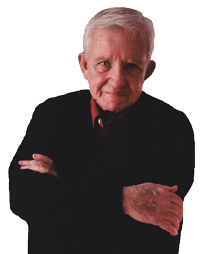
I was introduced to a quietly imposing woman without makeup who wore her grey hair in a braid around her head, like a peasant or one of those strong Midwestern farm women painted by Grant Wood, or portrayed by Willa Cather in O Pioneers. She was Dorothy Day, co-founder of the Catholic Worker newspaper and guiding spirit of the movement of the same name. Dorothy greeted me politely, reservedly and rather sternly. and let me see a copy of the first issue of The Catholic Worker newspaper, which sold for a penny, and was published on May Day of 1933, in the depths of the Great Depression. When I read the first editorial, one that she wrote, I had to sit down and copy it into my notebook. It said the paper would not be restricted to the people of of any one religion or political belief, any one color of skin or cut of clothes, but that it was
“For those who are sitting on benches in he warm spring sunlight.
“For those who are huddling in shelters trying to escape the rain.
“For those who are walking the streets in the all but futile search for work
“For those who think there is no hope for the future, no recognition of their plight.”
I felt a tinge from the power of the words and of the woman who wrote them. When I looked up, she was gone.
The Catholic Worker had a “Hospitality House” in the Bowery – unlike the “Mission Houses” in the Bower – the section of Manhattan where the winos and derelicts gathered – you didn’t have to declare yourself “saved by Jesus” to get fed. You didn’t have to sing a hymn. All you had to do was be hungry.
I wrote about Dorothy Day and The Catholic Worker in my second article published in The Nation magazine (“Miracle in the Bowery”) and I got to be friends with some of the young volunteers who had come from all across the country to live and work there – Michael Harrington, who went on to write The Other America that inspired the LBJ poverty program, and Ned O’Gorman, the poet who wrote reviews for Commonweal magazine. I also met Mary Ann McCoy, Eileen Fantino and Helen Russell, who had started a day care center for children in East Harlem, where I went to live and write my first book Island in the City: The World of Spanish Harlem.
After my article about The Catholic Worker came out in The Nation, Dorothy wouldn’t speak to me. I was shocked, because I had praised her and her work. Finally, I learned that she was upset that I had cited a fact from her Bohemian past that I had learned from Malcolm Cowley’s book Exile’s Return, about the writers who had lived in Paris in the ‘Twenties and came home to America in the next decade. Cowley had written that in the Village in the ‘Twenties, “Dorothy Day was the only one who could drink Eugene O’Neill under the table.” I though that was a great achievement; she felt it glamorized the destructive fantasy of my era of the ‘Fifties that drinking yourself to an early death was a literary achievement. I hope that anecdote does not derail the movement for her canonization which began in the ‘Seventies and continues to this day.
Pope Francis became the first pontiff to comment on Dorothy Day in September of 2015 when he spoke to the U.S. Congress and Supreme Court. He spoke of the challenges of environmental collapse, poverty and migration, and singled out four Americans who gave us “a way of seeing and interpreting reality” that he said is desperately needed in our time: Abraham Lincoln, Martin Luther King, Jr., Thomas Merton, and Dorothy Day.

The information on the Pope’s talk to Congress is from the excellent new biography Dorothy Day: Dissenting Voice of the American Century by John Loughery and Blythe Randolph (Simon and Schuster).

Dan, did you ever have a chance to read The Nation– A Biography (The First 150 Years), by D.D. Guttenplan. there you are on page 147 et seq!